Troopers Hill Local Nature Reserve
|

|
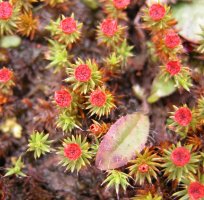 The pennant sandstone underlying Troopers Hill has resulted in acid soils, which are rare in Bristol. This has encouraged a wealth of plants to flourish, that are found nowhere else in the City. You can also see and hear many different birds and if you are very lucky, especially early in the morning, you might even see deer. The pennant sandstone underlying Troopers Hill has resulted in acid soils, which are rare in Bristol. This has encouraged a wealth of plants to flourish, that are found nowhere else in the City. You can also see and hear many different birds and if you are very lucky, especially early in the morning, you might even see deer.
This page gives a brief description of some of the wildlife you might find, but the best way to see it is to visit the hill for yourself. When you do visit take time to look closely at even the smallest plants, some of the most beautiful often go unnoticed; as shown by Nick's amazing photo of the moss Bristly Haircap
'Polytrichum piliferum' (click on the photo to enlarge and see the full detail).
More detail and species lists are included in the Friends of Troopers Hill Action Plan for the site. Results of more recent monitoring of moths and other invertebrates can be seen here together with photographs of some of the moths found taken on other sites.
|
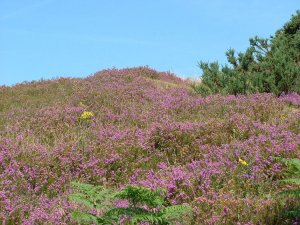
|
Heathland & Grassland
Ling and bell heather, more commonly found in places like Exmoor and Dartmoor, thrive on the acid soils on Troopers Hill. Look out for their purple flowers in late summer.
The grassland on Troopers Hill is unique to Bristol. Only plants that tolerate the acid soils survive. Look out for heath bedstraw and sheeps sorrel. There are also many different kinds of grasses and flowering plants such as mouse-ear hawkweed. The grassland is also home to three different types of grasshopper including the mottled grasshopper which is rare in the city.
|
Woodland and Scrub
The lower slopes and richer soils on Troopers Hill are covered in scrubby areas and woodland. Trees and shrubs present include hawthorn, silver birch, oak, apple, broom and gorse.
The broom (for which Troopers Hill is the best site in the city) and gorse are easily recognised by their attractive yellow flowers. The scrub is home to many small birds and mamals and notably the dark-bush cricket. There is also a lot of bramble which, while providing valuable wildlife habitat (and blackberries for local residents), needs control to stop it overwelming other species such as the broom.
|
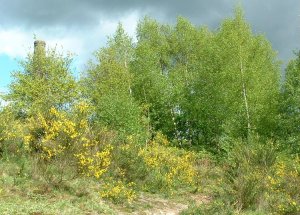
|
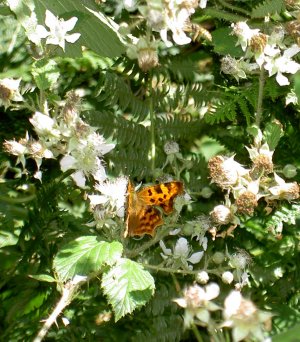
|
Insects
Troopers Hill is alive with butterflies in the summer. Common blues, holly blues, small coppers and the beautiful brimstone have all been seen this year. Unfortunately the rare grayling for which the site was once well known has not been seen since the mid nineties.
In addition to butterflies there are many smaller less noticeable invertebrates on Troopers Hill and for many of these it is the most important site of its type in the Bristol region. There are a large number local rarities and even an endangered species, the mining bee, Nomada Guttulata. This and other more common mining bees nest in the areas of erosion on the hill making these areas of bare ground one of the most important habitats on the site. Results of recent monitoring.
|
Birdlife
Many birds make their home on Troopers Hill and the surrounding woodland including Whitethroat, Chiffchaff, Willow Warblers, Blackcaps, Whitethroats, Goldcrests, Long Tailed Tits and Jays. There are also many of the more common songbirds such as Wrens, Blue Tits, Great Tits, Robins and Blackbirds. If you are lucky you will see Green Woodpeckers with their distinctive yellow rump visible as they fly away. Magpies are always present and can sometimes be seen fighting with Crows. There have also been sightings of buzzards circling the site.
|
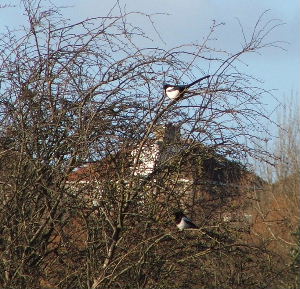
|
More Photographs
The links below take you to pages with more photos taken on Troopers Hill at different times of the year, these may take some time to download via a dial-up connection but are worth the wait!
You will also find some wildlife photographs on our Hill Photos page. The Photo Survey page shows how the flora has changed over the years.
|
|

